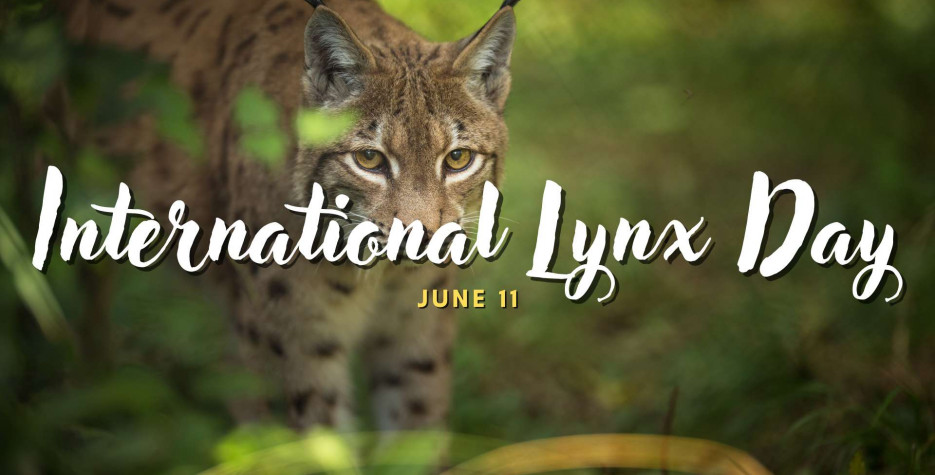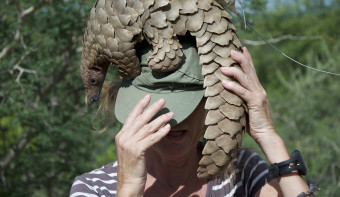About International Lynx Day
Once widespread across Europe, the enigmatic Eurasian lynx now roams in fragmented populations, a silent victim of habitat loss and historical persecution. Yet, a beacon of hope for this elusive feline was ignited in 2017 with the establishment of International Lynx Day, an annual observance held on June 11th.
This initiative, born from a groundbreaking transboundary project, shines a spotlight on the critical need for international cooperation to ensure the survival of one of Europe's most charismatic predators.
International Lynx Day was first introduced by the Interreg Central Europe 3Lynx Project, a pioneering initiative that united conservation organisations across Austria, the Czech Republic, Hungary, Italy, Romania, Slovakia, and Slovenia. The project's primary focus was the fragile lynx populations in the Carpathian Mountains and the Dinaric–Eastern Alpine regions, areas where these magnificent cats often traverse national borders.
The 3Lynx Project, which ran from 2017 to 2020, tackled the core challenges facing lynx conservation head-on. By harmonising monitoring techniques across different countries, researchers were able to gain a more accurate understanding of population sizes and movements. The project also focused on developing a unified conservation strategy and, crucially, engaging with key local stakeholders such as hunters and foresters to foster peaceful coexistence.
"The lynx does not recognise our borders," explains a representative from the project. "A conservation success in one country can be undermined by a lack of protection just a few kilometres away in another. International Lynx Day was created to raise awareness of this shared responsibility and to celebrate the collaborative spirit needed to protect these animals."
The Majestic and Elusive Hunter
Instantly recognisable by the long, black tufts on their ears and a short, black-tipped tail, lynx are masterful predators built for forest life. Their large, padded paws act like natural snowshoes, allowing them to traverse deep snow with ease, while their exceptional eyesight—so powerful it was once believed they could see through solid objects—enables them to spot prey from great distances. As ambush hunters, they rely on stealth and the cover of dense undergrowth to stalk their quarry, which primarily consists of roe deer, chamois, and other small to medium-sized mammals. Their presence is a key indicator of a healthy and functioning forest ecosystem.
The genus Lynx comprises four distinct species, each adapted to its native environment. The Eurasian lynx (Lynx lynx), the focus of these European conservation efforts, is the largest of the four. North America is home to two species: the Canada lynx (Lynx canadensis), found in the vast boreal forests, and the bobcat (Lynx rufus), the most adaptable and widespread of all lynx. The fourth species, the Iberian lynx (Lynx pardinus), found only in small pockets of Spain and Portugal, is a renowned conservation success story. Once on the brink of extinction with fewer than 100 individuals remaining, intensive recovery programmes have seen its status improve from 'Critically Endangered' to 'Endangered', offering a powerful lesson in what dedicated conservation can achieve.
The Plight of the Lynx: A Tale of Two Regions
The conservation status of the Eurasian lynx (Lynx lynx) in the project's focus regions presents a mixed but challenging picture. The Carpathian Mountains host one of the largest and most stable lynx populations in Europe, estimated at around 2,100-2,400 individuals. However, this population remains largely isolated, making it vulnerable to genetic homogeneity and unforeseen environmental pressures.
The situation in the Dinaric–Eastern Alpine region is more precarious. The population here, reintroduced in the 1970s, is classified as endangered and suffers from severe inbreeding due to its small founding population. This genetic bottleneck threatens the long-term viability of the lynx in this area, making transboundary reinforcement efforts, such as the subsequent LIFE Lynx project, essential for its survival.
Across both regions, the primary threats to the lynx are depressingly familiar. Habitat fragmentation, caused by expanding infrastructure and urbanisation, carves up their territories, making it difficult for them to find mates and establish new home ranges. Illegal poaching remains a significant pressure, often stemming from a perceived conflict with livestock or competition for game species.
International Lynx Day: A Day for Action and Awareness
International Lynx Day serves as a powerful platform to address these challenges. Conservation groups, wildlife parks, and educational institutions across the participating nations and beyond organise a variety of events to mark the occasion. These range from public lectures and documentary screenings to guided nature walks and educational workshops for children. The day is also a focal point for fundraising efforts, with proceeds supporting ongoing monitoring, research, and community outreach programs.
The success of initiatives like the 3Lynx Project and the ongoing work of its partners demonstrates that a future where humans and lynx can coexist is possible. By fostering cross-border collaboration and promoting a deeper public understanding of these magnificent predators, International Lynx Day is playing a vital role in ensuring that the silent paws of the lynx continue to tread through the wild heart of Europe for generations to come. Individuals are encouraged to participate in local events, support conservation organisations working on the ground, and advocate for policies that protect both the lynx and its vital forest habitats.
Similar Observances
World Whale Day 🐳
Read More
Other Observances on July 11th 2026
World Rum Day 🥃
Read More










